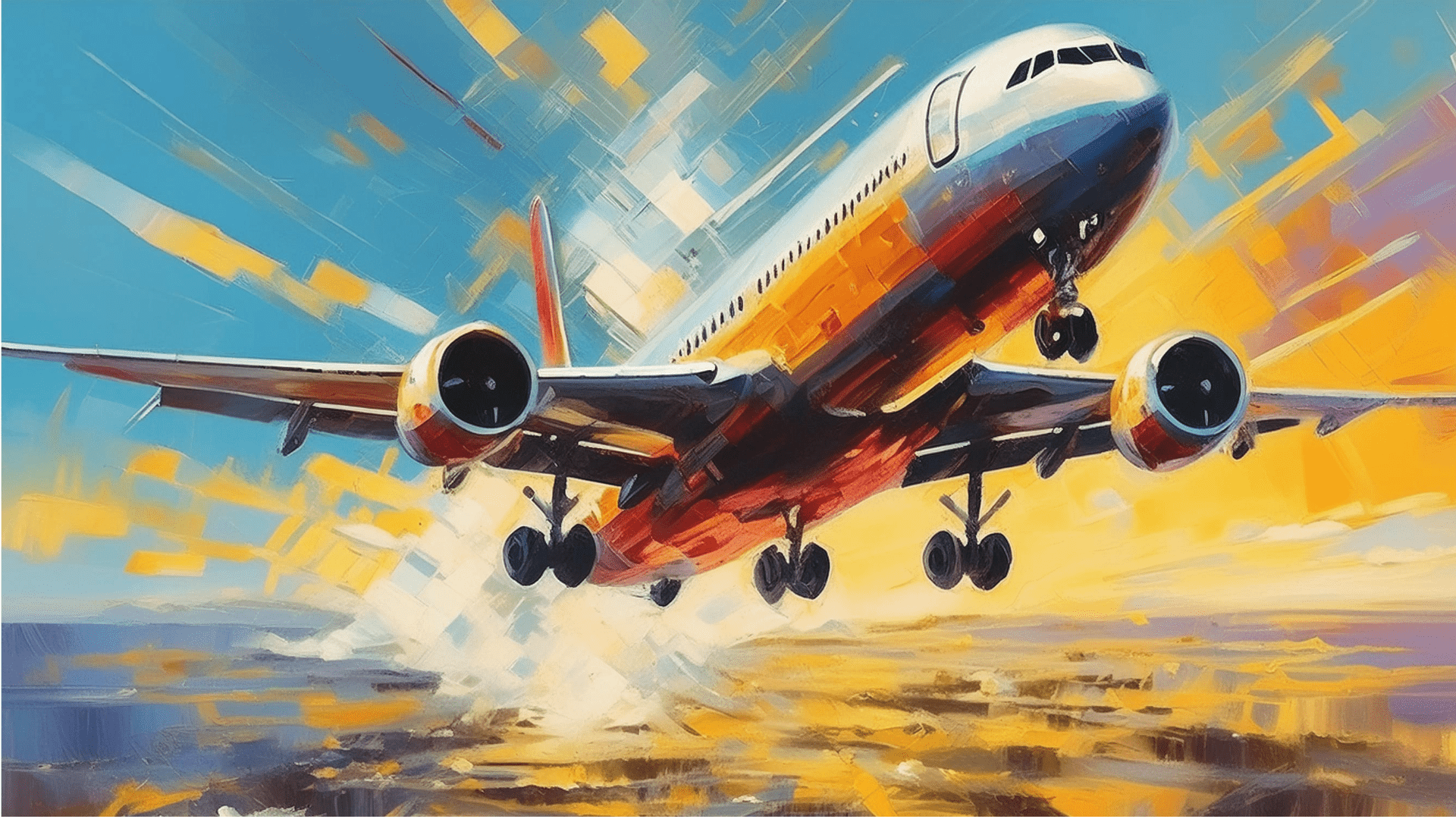The Boeing 737 MAX, once a symbol of aviation innovation, is now synonymous with tragedy and corporate crisis. The grounding of the entire fleet in 2019 following two fatal crashes exposed a series of failures within Boeing, shaking investor confidence and sending the company into a tailspin. While the 737 MAX has returned to the skies, Boeing’s journey back to cruising altitude is far from over.
Turbulence continues to buffet the aviation giant. Production delays plague various aircraft programs, from the 787 Dreamliner to the 777X, frustrating airlines and raising concerns about Boeing’s ability to deliver on its promises. Supply chain disruptions and labor shortages further exacerbate these challenges, creating a perfect storm that threatens to keep Boeing grounded.
The Turbulent Storm
Boeing’s troubles have had a significant impact on its stock price and investor confidence. The share price has declined 60% in the last 5 years, losing $260 billion in market value, reflecting the market’s uncertainty about the company’s future. Several factors have contributed to Boeing’s current predicament:
- The 737 MAX Crisis: The two fatal crashes exposed flaws in the aircraft’s design and certification process, leading to a global grounding and intense scrutiny of Boeing’s safety culture. The crisis resulted in significant financial losses, reputational damage, and a loss of trust among airlines and passengers.
- Production Issues and Delivery Delays: Boeing has faced persistent challenges in ramping up production and delivering aircraft on time. Issues with the 787 Dreamliner’s production quality and supply chain disruptions have caused significant delays, impacting airline operations and frustrating customers.
- Management Shakeups and Leadership Instability: Boeing has undergone several leadership changes in recent years, creating uncertainty and raising questions about the company’s direction. The departure of CEO Dennis Muilenburg and other senior executives has added to the sense of instability.
- Competition from Airbus and Emerging Players: Airbus, Boeing’s European rival, has capitalized on its competitor’s struggles to gain market share.
- Financial Losses and Debt Burden: The 737 MAX crisis, production delays, and other challenges have resulted in significant financial losses for Boeing. The company’s debt burden has also increased, raising concerns about its financial stability.
Institutional investors and analysts are closely scrutinizing every development, questioning whether Boeing can regain its footing or whether irreparable harm has been done. The company’s ability to effectively address these concerns will significantly impact its future success. Concerns include:
- Production Challenges: Boeing’s production of the 737 MAX and 787 Dreamliner aircraft has been plagued by delays and quality issues. Investors worry if the company can ramp up production efficiently and address safety concerns effectively.
- Regulatory Scrutiny: The Federal Aviation Administration (FAA) and other regulatory agencies have intensified their oversight of Boeing after the 737 MAX crashes. Analysts are assessing the potential impact of ongoing investigations and certification processes on Boeing’s reputation and bottom line.
- Financial Stability: Boeing’s financial performance has taken a significant hit due to the grounding of the 737 MAX. Investors are evaluating the company’s ability to manage its debt and secure financing for future projects.
- Reputation Damage: The 737 MAX crisis has damaged Boeing’s reputation, leading to loss of customer confidence and potential legal liabilities. Analysts are considering how the company plans to rebuild its credibility and regain the trust of airlines and the flying public.
- Competitive Landscape: Boeing faces stiff competition from Airbus and other aerospace manufacturers. Investors are assessing the company’s ability to regain market share and stem competition from others like Embraer.
- Leadership and Executive Departures: Recent executive departures, including the CEO, have raised questions about Boeing’s leadership stability. Investors are looking for signs that the company has a clear and effective management team in place to navigate the challenges ahead.
The Warning Signs Were There If You Knew Where To Look
Could investors have foreseen the turbulence that engulfed Boeing? The answer, to a certain extent, is yes. While predicting the exact nature and timing of the 737 MAX crisis and subsequent production issues is impossible, a closer examination of Boeing’s corporate policies and sustainability reports could have revealed underlying vulnerabilities and potential red flags.
Most investors rely on traditional financial metrics and market analysis, often overlooking the wealth of information hidden within corporate sustainability reports. These reports offer valuable insights into a company’s approach to environmental, social, and governance practices, which are increasingly recognized as critical drivers of long-term value creation.
Reading Between the Lines: Boeing’s Sustainability Disclosures
A careful analysis of Boeing’s sustainability reports over the years might have unveiled concerning trends:
- Safety Culture Concerns: Reports of production pressures, employee concerns about safety protocols, and a history of quality control issues signaled a potential weakness in Boeing’s safety culture, even before the 737 MAX tragedies.
- Supply Chain Risks: Overreliance on single-source suppliers and complex global supply chains indicated vulnerability to disruptions and delays, as evidenced by the 787 Dreamliner production issues.
- Workforce Management: Reports of labor disputes, high employee turnover, and challenges in attracting and retaining skilled talent pointed to potential workforce management issues impacting production efficiency and innovation.
- Environmental Performance: Boeing’s environmental record and sustainability initiatives, particularly in comparison to competitors like Airbus, raised concerns about its long-term commitment to reducing its environmental footprint and adapting to evolving regulations.
Comparing Boeing and Airbus: A Tale of Two Strategies
A comparative analysis of Boeing and Airbus’ sustainability reports highlight stark differences in their corporate policies and strategic priorities. Airbus has consistently emphasized a strong safety culture, collaborative labor relations, and a proactive approach to environmental sustainability. This is reflected in its robust safety management systems, investments in employee training and development, and leadership in developing fuel-efficient aircraft and exploring alternative propulsion technologies.
Staying Ahead of the Curve: Monitoring Boeing’s Progress
Investors seeking to gauge Boeing’s progress on its path to recovery should look beyond traditional financial metrics and delve deeper into the company’s ESG practices. Key indicators to monitor include:
- Safety Enhancements: Track the implementation and effectiveness of new safety protocols, including changes to the design and certification process, improved pilot training programs, and a renewed focus on quality control.
- Production Stability: Monitor production rates, delivery timelines, and progress in resolving supply chain bottlenecks for key aircraft programs like the 737 MAX and 787 Dreamliner.
- Workforce Engagement: Pay attention to employee satisfaction surveys, labor relations developments, and initiatives aimed at improving workforce training and development.
- Environmental Initiatives: Track Boeing’s progress in reducing emissions, investing in sustainable aviation fuels, and developing next-generation aircraft with improved fuel efficiency.
By actively engaging with Boeing’s sustainability reports and comparing its ESG performance to industry peers, investors can gain valuable insights into the company’s underlying strengths and weaknesses, enabling them to make more informed investment decisions and assess the likelihood of a successful turnaround.
If you’d like to learn more about the tools that help investors identify investment risks and opportunities arising from sustainability disclosures, you can learn more at www.PortageurAI.com







